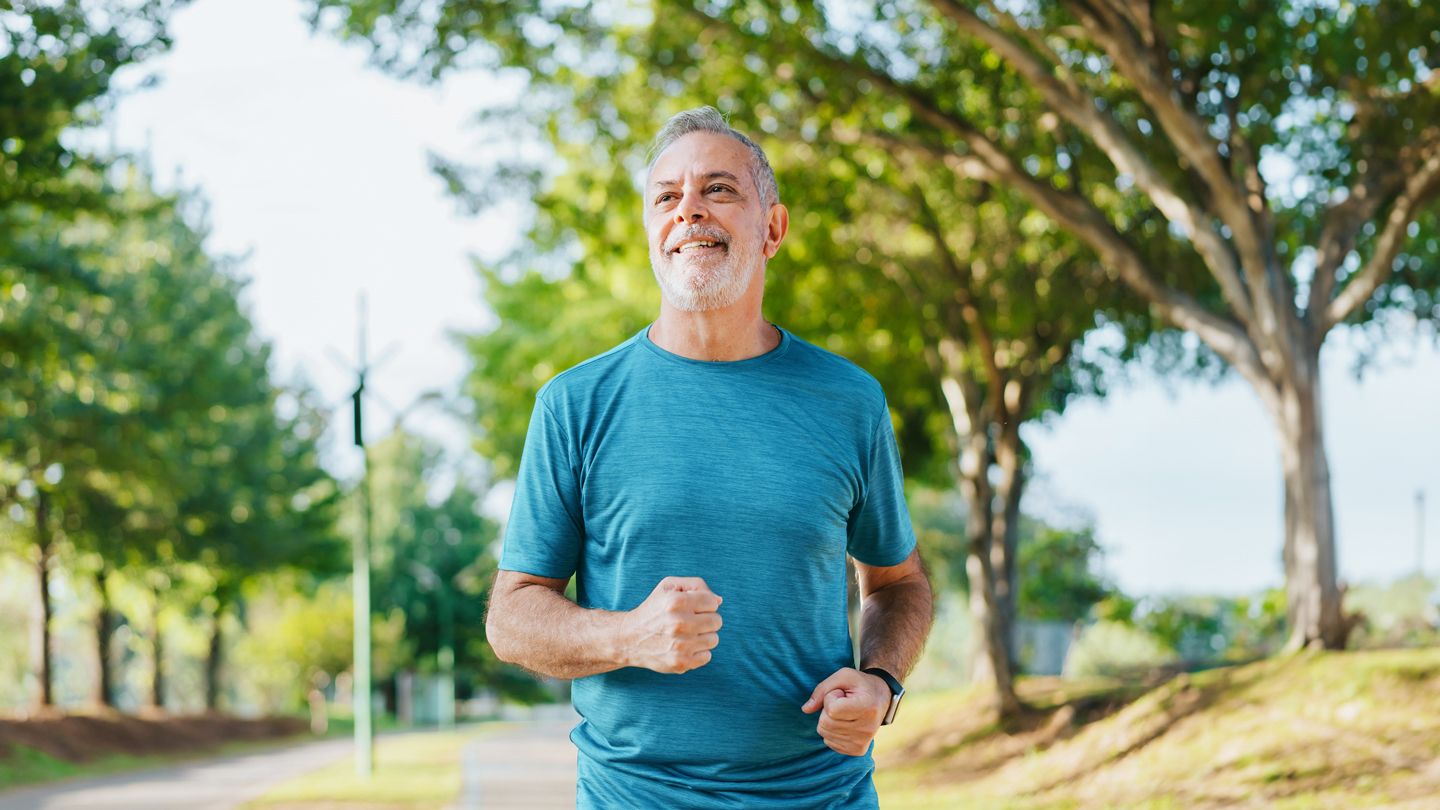Just 5 Minutes of Exercise a Day May Lower Your Blood Pressure
Getting your heart rate up through a little more daily vigorous activity can make an impact, a new study finds.

Replacing just five minutes a day of sedentary activities or low-intensity movements with moderate-to-vigorous physical activity could help lower blood pressure, a new study finds.
“The good news is that whatever your physical ability, it doesn’t take long to have a positive effect on blood pressure,” Dr. Blodgett said. You don’t necessarily have to hit the gym, Blodgett added. You can improve your blood pressure with all types of moderate-to-vigorous exercise, like taking stairs or cycling when you run errands.
Study Subjects Lowered Both Systolic and Diastolic Blood Pressure
Researchers examined data from nearly 15,000 volunteers who had their blood pressure taken and wore activity trackers for 24 hours to record all of their movements, including sleep and sedentary time. Overall, participants spent an average of about 7.1 hours sleeping, 10.7 hours sitting or being sedentary, 3.2 hours standing, 2.7 hours walking, and just 16 minutes engaged in moderate-to-vigorous physical activity like cycling, jogging, or climbing stairs.
The researchers found that replacing sedentary or low-intensity activities with moderate-to-vigorous exercise for five minutes had a measurable impact on blood pressure.
This small shift reduced systolic blood pressure — the “top” number that indicates how much pressure blood exerts against artery walls when the heart beats — by an average of 0.68 mmHg (millimeters of mercury). It also lowered diastolic blood pressure — the “bottom” number that indicates the pressure blood exerts against artery walls when the heart rests between beats — by an average of 0.54 mmHg, according to findings published in the journal Circulation.
Small Changes Can Lead to Meaningful Improvements
While five minutes extra of exercise is the minimum amount needed to see any change in blood pressure, scientists also found that it might not take more than an extra 10 or 20 minutes a day of exercise for people to see clinically meaningful improvements in blood pressure with the potential to impact their overall health.
Replacing 20 to 27 minutes a day of sedentary or less active movements with moderate-to-vigorous physical activity could result in a clinically meaningful 2 mmHg reduction in systolic blood pressure, the study found. Similarly, swapping out 10 to 15 minutes of less active behaviors with exercise could result in a clinically meaningful 1 mmHg reduction in diastolic blood pressure.
“If you want to change your blood pressure, putting more demand on the cardiovascular system through exercise will have the greatest effect,” Blodgett said in the statement.
The study wasn’t designed to prove whether or how replacing sedentary or low-intensity movement with more vigorous activity might directly improve blood pressure.
How Exercise Improves Heart Health
It makes sense that adding more moderate-to-vigorous exercise time each day would reduce blood pressure, because physical activity burns calories and can help prevent weight gain, an important risk factor for hypertension, says Nour Makarem, PhD, an assistant professor of epidemiology at Columbia University’s Irving Medical Center and Mailman School of Public Health in New York City, who wasn’t involved in the new study.
“Beyond the impact on weight, physical activity is also associated with lower stress levels and physiological benefits to the cardiovascular system, such as improved health of the lining of the blood vessels, better sensitivity to insulin, and lower levels of inflammation, which collectively reduce the risk for high blood pressure,” Dr. Makarem says.
There are many easy ways to incorporate more intense activity into your day, says Bethany Barone Gibbs, PhD, chair and professor of epidemiology and biostatistics at West Virginia University School of Public Health on Morgantown.
“Simplest and easiest is a brisk walk which is at moderate intensity — I often take a loop around my little neighborhood if I can get 10 minutes between meetings or am taking a quick call,” says Dr. Barone Gibbs, who wasn’t involved in the new study. “This is great because I don't have to change my clothes or take a shower after.”
Working up a sweat and going for longer exercise sessions, however, can have a bigger impact on blood pressure. “If you can do something more intense, you can get greater health benefits — something like going up and down stairs, jumping rope, or a quick strength training circuit with body weight, bands, or free weights can really up the intensity and can be pretty accessible,” Barone Gibbs says.
Everyday Health follows strict sourcing guidelines to ensure the accuracy of its content, outlined in our editorial policy. We use only trustworthy sources, including peer-reviewed studies, board-certified medical experts, patients with lived experience, and information from top institutions.
Sources
- Blodgett J et al. Device-Measured 24-Hour Movement Behaviors and Blood Pressure: A 6-Part Compositional Individual Participant Data Analysis in the ProPASS Consortium. Circulation. November 7, 2024.
- An Extra Five Minutes of Exercise Per Day Could Help to Lower Blood Pressure. Eurekalert. November 6, 2024.


